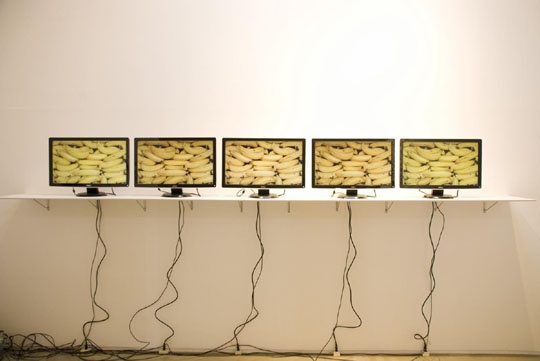I n contrast to the type of mass- produced art best characterized in Japan by Takashi Murakami and the hordes of assistants who complete paintings and sculptures to the specifications of their employer, is a small coterie of sculptors/painters who work at individually crafting the mass-produced items of the everyday environment.
Kenji Toki crafts visually identical polystyrene sushi trays commonly found in supermarkets using traditional techniques of lacquer, and Yoshihiro Suda and Fuyuki Maehara carve trompe l'oeil vegetal sculptures following after nature — surely the prototype for mass-production. Another compelling artist is Nobuaki Onishi (b. 1972), who is exhibiting recent work in Chain at Osaka's Gallery Nomart until Jan. 23, and like his contemporaries' creations, the virtuosic realism of the works is primarily an aid to lead the viewer in more cerebral directions.
Onishi's slightly earlier works in the back, second-story gallery impart context to his more recent works in the exhibition space at the front. In the 2005 work "Burajya" (Brassiere), Onishi simply hand-crafted a reproduction of a factory-made fine-lace bra in lacquer on acrylic resin. The result was perceptually indistinguishable from the expected mass-produced finish of the original; though while one could marvel at the artist's labors and technical proficiency, there did not seem much else to say of the work.



